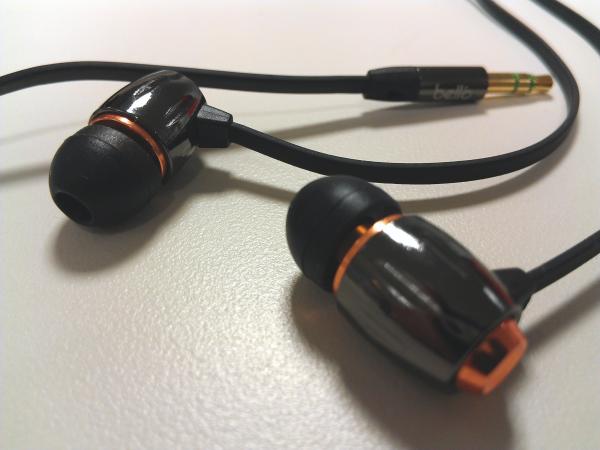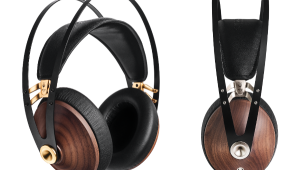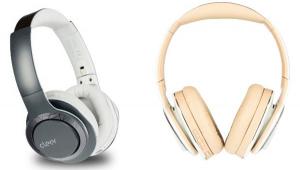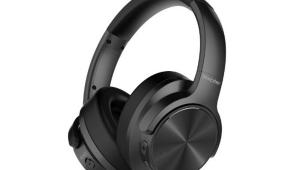Review Redux: Bell'O Digital BDH653 In-Ear Headphone

After seeing our initial review of the Bell'O BDH650, Bell'O sent us a replacement, feeling that our review sample must have been a prototype. Yes, we've heard this kind of thing before, but the argument, in this case, did make sense (the 650 doesn't seem to have made it into Bell'O's final headphone lineup anyway). So we took another listen.
They sent us the BDH653, which should, essentially, be the same headphone except it adds an inline volume control and headset features. I was able to compare it to the original BDH650 and noticed that the sound was slightly different (for some clues as to why, see Brent Butterworth's notes on measurement - and the attached graphs). Gone was the scratchy and brash high end, although it still has a "peaky" sound to the mid-treble. Listening again to Jason Mraz' "I Won't Give Up", the vocals were rich and lush, especially on the male chorus in the background vocals, but it still has some sibilance. The extreme high-end has a slightly veiled, pulled-back sound, which feels unnatural given the sharpness in the upper range of vocals. The bass was more impactful, helping to round out the bright high-end, but it could be boomy on bass-heavy tracks. There is still a lack of smooth, natural sound to the BDH653. I listened to Florence and the Machine's "Shake It Out," and when the massive wall-o-sound kicks in for the chorus, the bass gets a bit muddy, while the female vocals smear in a bright wash of sound, lacking distinction. Imaging was very nice, with a very accurate sound stage. In the first two verses of "Shake It Out" the background vocals have a slight stereo panning on the line "I can see no way", and the placement is spot on; subtle, but accurate.
One more improvement: the hardshell case for the BDH653 has a small sleeve to hold the additional earcups. Nice addition.
The BDH653 is still a great looking pair of in-ear monitors. The build quality is superb, and they look like they should cost quite a bit more than $39.99. For the price, they sound good, though not quite up to par with their more expensive competitors.
Measurements
I measured the new sample of the BDH653 just as I did the original sample, using a G.R.A.S. RA0045 ear simulator, a Clio FW audio analyzer, and a Musical Fidelity V-Can headphone amplifier. I used the medium tips, which fit the ear simulator best, then tried reinserting the tips several times and measuring again, settling on a position that yielded the most representative measurement.
Although it's clear from other measurements that the new sample differs from the original, you wouldn't know it from the shape of the frequency response curves. It's obvious that the new sample is more sensitive, but the shapes of the frequency response curves are practically identical. It's a fairly typical response for an IEM, perhaps with a little more emphasis at 6 kHz than usual, and a bit less emphasis than usual at 2 to 3 kHz. Adding 70 ohms output impedance to the V-Can's 5-ohm output impedance to simulate the effects of using a typical low-quality headphone amp only slightly changes the frequency response, boosting the deepest bass notes by +2 dB at 20 Hz.
Total harmonic distortion (THD) at 100 dBA is low, as with the original, just bumping above 1% at some frequencies and rising to 2% at 20 Hz. I remeasured the old sample and found it to be somewhat higher than before (perhaps due to aging with use), having a similar THD result except in the deep bass when THD rose to 7% at 20 Hz.
Impedance of both samples is essentially flat, but the impedance of the new sample is significantly lower, averaging 18 ohms versus 24 ohms for the original. I didn't expect isolation to change significantly because the form factor didn't change, and indeed, as you can see from the chart, the new sample measured about the same as the original.
Average sensitivity with a 1 mW signal at rated 16 ohms impedance is 100.6 dB from 300 Hz to 10 kHz, 101.1 dB from 300 Hz to 6 kHz. Although my measurements of the original sample are not directly comparable because the signal level was calculated for 25 ohms impedance (at the time I was unable to locate Bell'O's published impedance spec), it's obvious from the frequency response measurements that the new sample is approximately +5 dB more sensitive across the entire audio spectrum. - Brent Butterworth
- Log in or register to post comments




































































